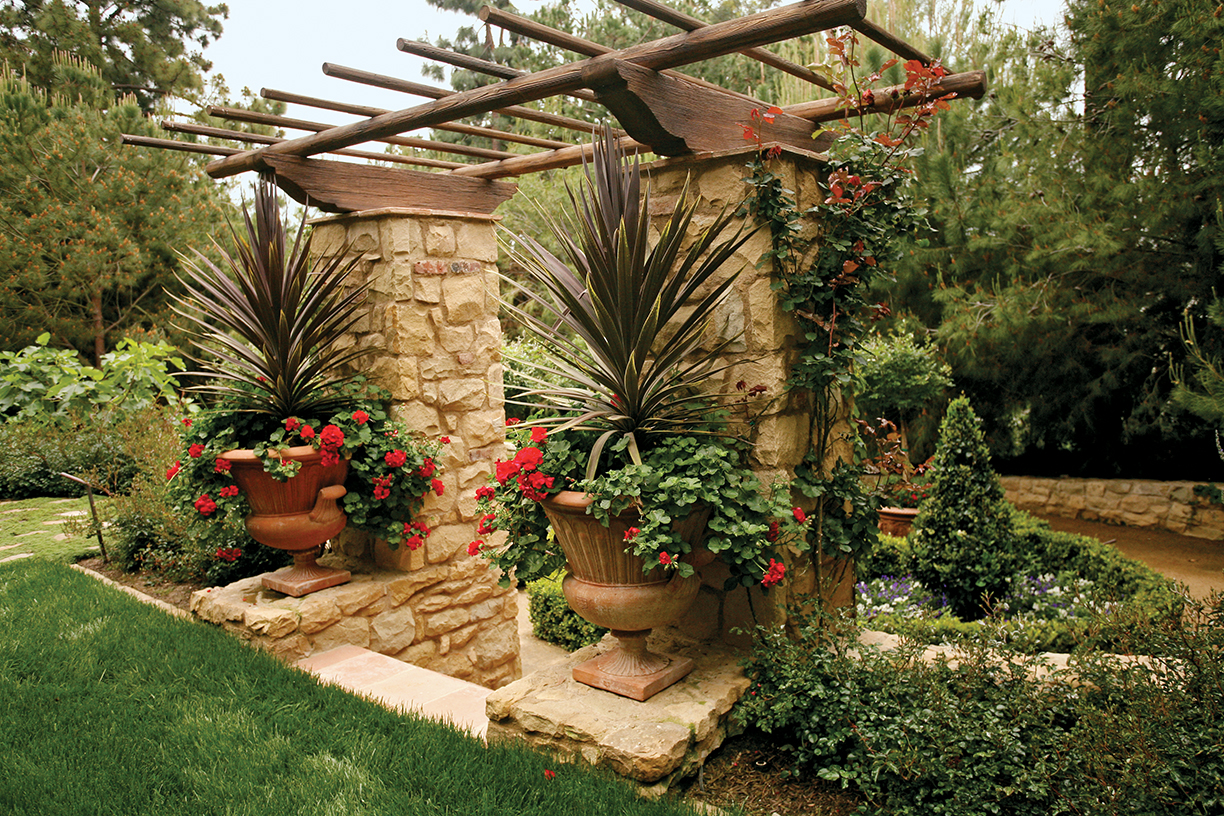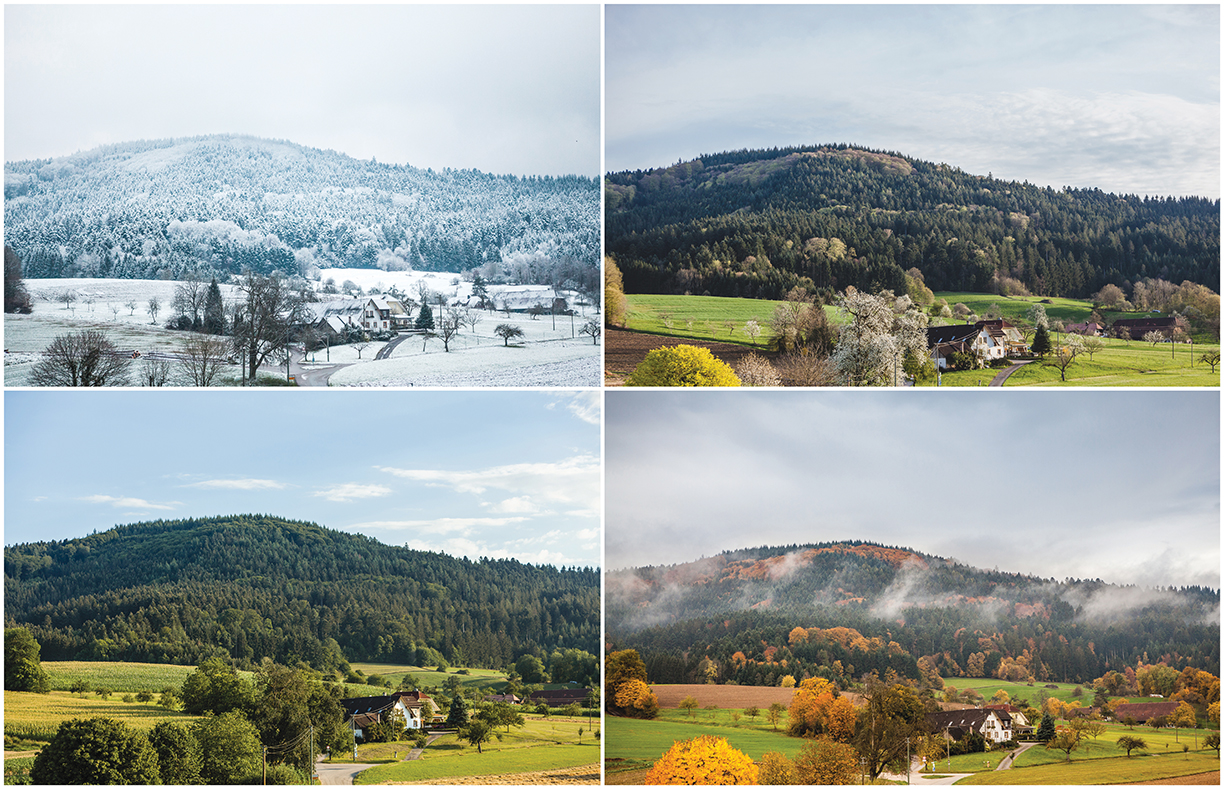
©istockphoto.com / Arita Cimermane
“The seasons in the landscape, much like the seasons of one’s life, are to be embraced, appreciated and weathered.” — Robin Kramer
When it comes to the seasons, an adaptable landscape is always a challenge. In northern climates, the focus is too often on the fleeting warmer months where blossoms are abundant and beautiful. Into late fall, the vibrant leaves have fallen and a bare winter — and landscape — sets in. In warmer areas, the challenge is less about the seasons and more about weather extremes such as droughts or rain.
We talked to luxury landscape designers about how they work through the challenges of the changing seasons and find beauty in the landscape all year long.
A Strong Framework
“I consider structure to be the most critical component in any garden. A successful garden design will look good in any season if the bones of the garden are well designed,” says New York City-based Landscape Designer Robin Kramer. “Paths, walls, edging, hedges, pergolas and water features are the permanent features that make a garden strong and confident. The flowering plant material is the dressing of the landscape and can easily be modified based on the desires of the gardener.”
“Ideally, a landscape is something that transitions throughout the year and it has its glory days throughout every season,” says Vermont-based Landscape Designer Ashley J. Robinson. “They are rarely looking for a one-shot wonder with a full-on explosion of bloom in the spring.”
Robinson seeks out materials such as wood, metal or other elements that are not herbaceous in order to craft a composition that is visually intriguing despite the blooms, or lack of blooms. “Natural stone, boulders, outcropping in the garden. A well-intentioned feature is important for a winter garden.”
Similarly, Teresa Watkins, a Master Gardener and specialized horticulturist for over 20 years in Florida, relies on hardscape and garden art to design spaces that truly fit a client’s personality, while at the same time ensuring the health and sustainability of the landscape. “I have an ongoing two-year project designing a formal estate landscape with a rose garden with walls, a faux stone bridge, butterfly garden, water features, orchard, meandering pathways and poolscaping.”
An architectural framework is key to high-end landscape, and Pennsylvania-based Landscape Designer Donald Pell is an expert at finding a balance of this within a range of vernaculars — from English-style to modern. “Our work always includes thoughtfully designed architectural spaces. These can be simple and they can be very substantial,” he says. “Right now, I am building a very large promenade through a woodland
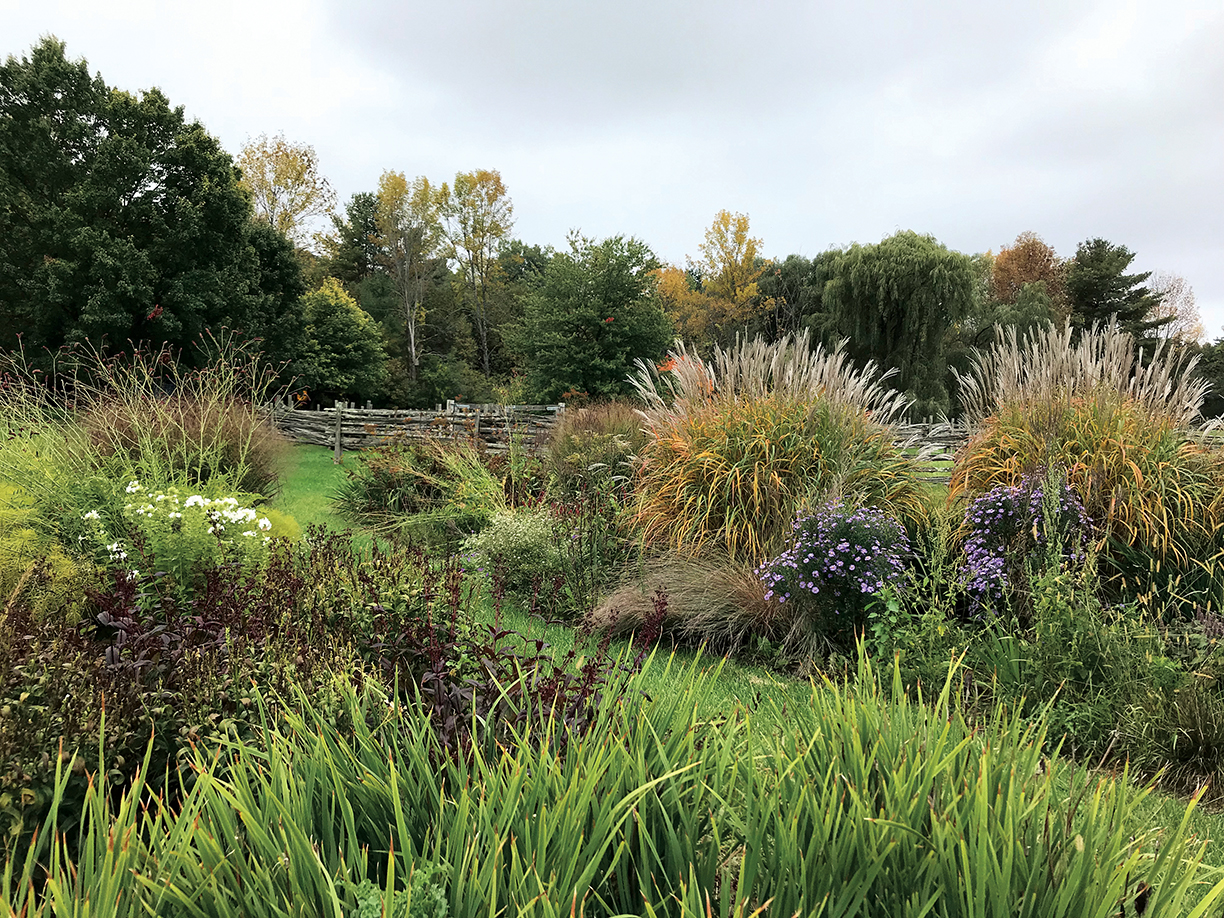
|
A beautiful wild garden crafted by Vermont Landscape Designer Ashley J. Robinson. Photo courtesy of Ashley J. Robinson. |
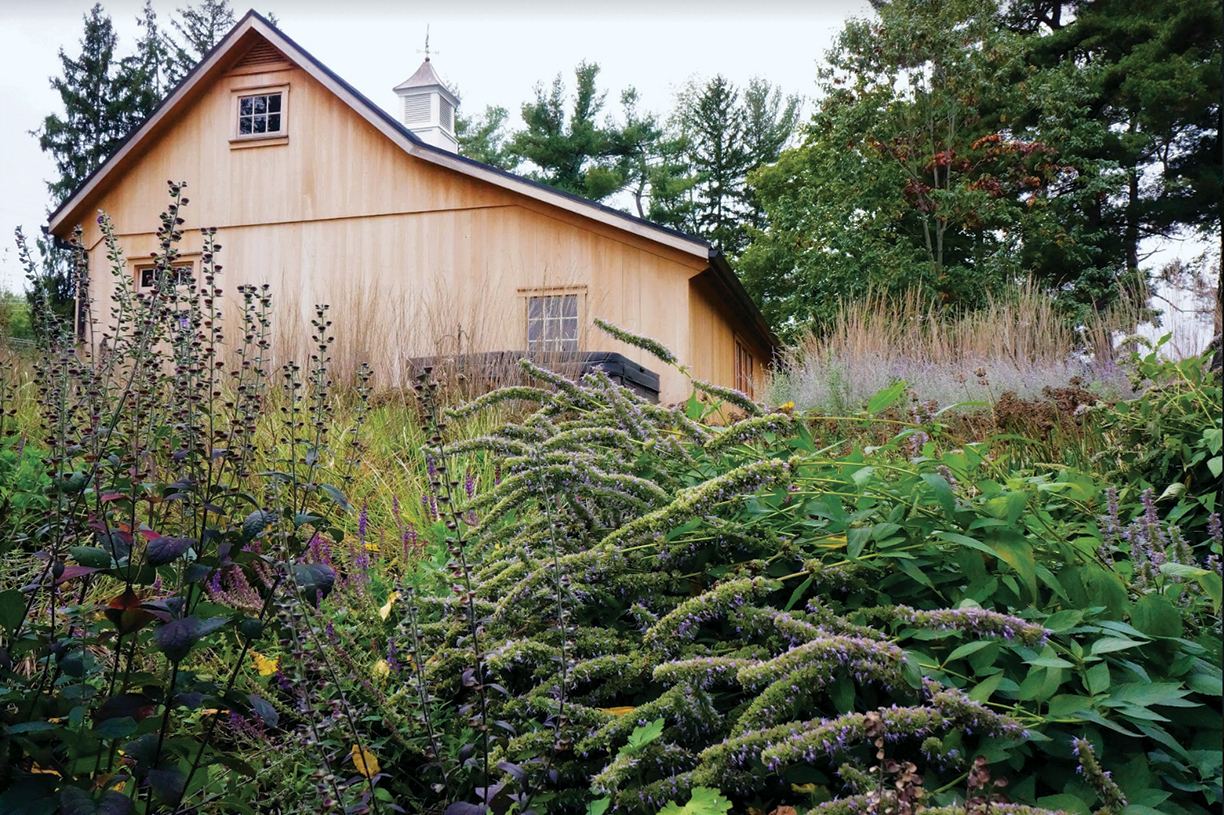
|
Donald Pell Gardens gave this 1700s Colonial Farmhouse garden an update with native and cosmopolitan plants used to evoke the regional landscape. Photo courtesy of Donald Pell. |
that I would describe as very classical, and the plantings are very much impressionistic woodland. I specified hand-cut fieldstone curbing with paths that has a Pennsylvania Colonial feel, and I really like bond pattern paving details angled from the home, which tend to be very modernist.”
When it comes to warmer climates, such as those of the Sun Belt, structure has less to do with looking good throughout bare seasons, but more to do with a landscape that can sustain year-round outdoor living. “For contemporary homes in Southern California, the indoors rolls right outside,” says landscape architect Scott Zucker. “You’ve got enormous sliding doors with pocket entry, kitchen and family rooms that pour right out onto the terrace.” In designing these homes, materials that can withstand the outdoors, but also look just as beautiful indoors is the challenge. A huge trend, Zucker points out, is utilizing porcelain or ceramic pavers that not only keep a stunning transitional look, but also require very little maintenance.
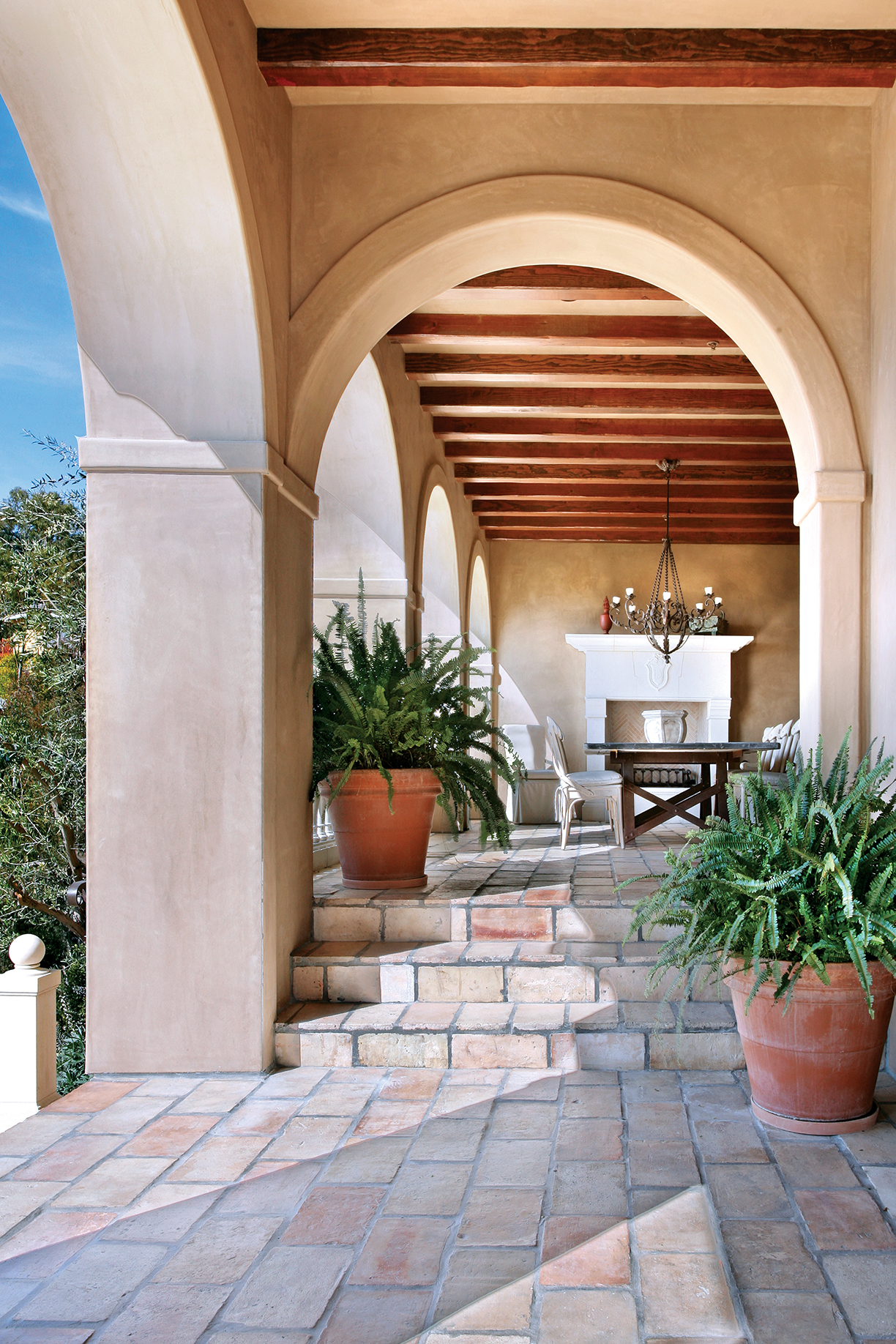
|
Above, an outdoor portico crafted from stone at a Southern California residence designed by Scott Zucker of Zucker Design Associates, Inc. Below, an arbor for a Laguna Beach residence offers an eye-catching landscaping feature. Top photo courtesy of Jeri Koegal. Bottom photo courtesy of Scott Zucker. |
